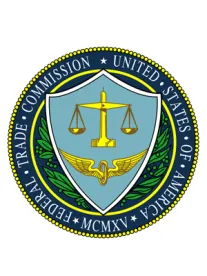The Federal Trade Commission’s (“FTC”) recent winning streak in its ongoing challenges of hospital and physician mergers has, at least for now, ended in a Philadelphia U.S. district court. After six days of evidentiary hearings, in a 62-page opinion, Judge Gerald Pappert denied[1] the FTC’s and Pennsylvania Attorney General’s request to preliminarily enjoin a proposed merger between Thomas Jefferson University (“TJU”) and the Albert Einstein Healthcare Network (“Einstein”).
The FTC and Pennsylvania AG (together, the “Government”) brought suit to stop the merger in February. The Complaint alleged that the two hospital systems were close competitors for general acute care (“GAC”) hospital services, with TJU operating 11 GAC hospitals and Einstein operating three in the Northern Philadelphia area. The Government asserted that a combined TJU/Einstein would control at least 60% of the inpatient GAC hospital services market in the area, and at least 45% in a broader geographic market encompassing much of Montgomery County.
Judge Pappert’s opinion stressed the Government’s need to match up the economic theories, including the hypothetical monopolist test and use of diversion ratios, to real-world “competitive realities.” The opinion also emphasized the need for the Government to have consistent, credible commercial payer witnesses to substantiate its theory of harm.
Judge Pappert’s Opinion Critical of Typical Market Definition Economic Modeling
Merger challenges, including in the health care industry, often turn on market definition. The government proposes a specific product and geographic market, usually one that is narrow enough that it produces concentration statistics that entitle the government a presumption of competitive harm, while the merging parties argue that the definition is improper. Such litigation includes a battle of the experts, with dueling economists discussing the merits of their particular definitional approaches based on econometric modeling.
Here, drawing from the Third Circuit’s Hershey[2] [3] case and the Horizontal Merger Guidelines, Judge Pappert stressed that the Government’s market definitions have to be consistent with “commercial realities,” and found that the Government’s case did not align with the court’s analysis of those commercial realties.
The Court Found the Government’s Reliance on Economic Models for Market Definition to Be Flawed
The DOJ/FTC Horizontal Merger Guidelines method of defining relevant markets, which have been adopted by the Third Circuit in Hershey, asks whether a hypothetical monopolist in an area would be able to profitably raise the price of its goods/services by a small but significant and non-transitory increase in price (“SSNIP,” often 5%). If the answer is yes, an appropriate antitrust market has been defined. This methodology, aptly called the hypothetical monopolist test (“HMT”), was utilized by the Government in defining its two GAC service geographic areas.
Judge Pappert, however, believed that the Government’s expert economist improperly applied the HMT because he attempted to measure the likely response of patients to a price increase by the merged hospital systems, rather than the effect on insurers. Previous cases have embraced the concept that health care markets operate with two stages of competition. “In the first stage, hospitals compete to be included in an insurer’s hospital network. In the second, hospitals compete to attract individual members of the insurer’s plan.” Thomas Jefferson Univ., at *3-4.
Judge Pappert noted “not until the insurer passes [a price] increase on to the patient in the form of higher premiums will the patient feel the impact of that price increase.” Id., at *35, quoting Penn State Hershey, 838 F.3d at 342.
For years, economists have asserted that measuring patient preferences is appropriate because insurer demand “is derived from patient demand for those providers.” The court disagreed with that position put forth as a maxim, finding instead that the Government’s economic calculations were inadequate for defining a relevant geographic market absent evidence to show that insurers make decisions about which hospitals to include in their networks based on patient decisions about where to seek care. Id., at *40. Judge Pappert noted that the basic economics have to be supported by credible evidence that the insurers would have to agree to price increases instead of looking outside his proposed geographic markets.” Id., at *47 (emphasis added). This represented a clear challenge to the FTC economists’ long-standing assumption that patient choices today reflect insurer alternatives in the future, and in this market, Judge Pappert held that patient choice and insurer interests were not necessarily aligned.
While Judge Pappert recognized that the FTC’s economic model could point toward higher pricing incentives, the court noted that these incentives are calibrated based on patient choices and hospital prices today, which do not necessarily reflect what insurers might do in the event of an actual price increase in the future. Reliance on this model, the court concluded, could be flawed if insurers retain an ability to look for alternatives outside of the market in the event of an actual price increase.
Commercial Realities Evidenced by Insurer Testimony Did Not Support the Government’s Geographic Market; IBC Testimony Motivated by Ulterior Motive
The court then turned to testimony from the four commercial insurers in the area regarding their ability to construct a viable hospital network without the merging parties. In hospital mergers, because of the two-stage nature of competition, the Government frequently relies on the testimony of commercial payers that they would be forced to take on a price increase from the merged entity that would ultimately be passed on to consumers in the form of increased premiums or out-of-pocket costs. Judge Pappert was critical of the Government’s reliance on such testimony in this case, as it did not align with the Government’s economic modeling. Of consequence, the southeastern Pennsylvania area commercial healthcare market is far more consolidated than the provider market, with Independence Blue Cross (“IBC”) having over 50% of the market, followed distantly by Aetna, United, and Cigna. Given this great amount of insurer consolidation and bargaining power, Judge Pappert believed the insurers would in fact not likely accept a price increase by a combined Jefferson-Einstein.
Of the four major insurers, two did not testify at the evidentiary hearing in support of the Government. The Government did not rely on testimony from United, presumably because it did not support its claims—its witness did not state that the absence of the Jefferson and Einstein hospitals in the Government’s geographic markets would make United’s network unmarketable or that United would agree to pay higher rates for the parties’ services. Aetna, the second largest insurer by covered lives, testified it had no concerns about the merger whatsoever. That left testimony by IBC, the largest insurer in the region, and Cigna, the smallest.
IBC testified that, in the face of a price increase from a merged Jefferson-Einstein, it would be forced to accept the increase. However, Judge Pappert found that testimony not credible. First, the IBC witness testified that he deemed all hospital mergers to be bad for consumers, a statement the Judge thought clouded the motives for the testimony. Second, the IBC witness testified that IBC seeks to include every provider in its networks in order to have the most marketable plan for employers, and thus maintain its greater than 50% market share in the region. Nonetheless, the witness acknowledged that IBC had threatened to terminate Einstein from its network previously, suggesting that IBC would not be concerned with omitting Einstein from its network, and therefore would not be susceptible to a price increase from the merged entity. The court felt that if faced with a price increase, IBC could omit Jefferson/Einstein entities from its network and turn to other providers for services. The court opined that, given the large share of the commercial market IBC has in the area, it is most likely that a price increase from a merged entity would not be feasible, given testimony about the necessity of participating in IBC’s networks for providers.
Finally, the court found that IBC’s motives for opposing the transaction impacted the credibility of its testimony. Jefferson and Einstein currently each own twenty-five percent of Health Partners Plans, a Medicaid and Medicare insurer that directly competes with IBC. The merger would make the parties a 50% owner, and recently Jefferson had sought to purchase the remaining 50%. The transaction would therefore create a direct competitor to IBC in that market—a greater concern to IBC, in the court’s opinion, than an “assertion that IBC would roll over and pay higher prices.”
With respect to the smallest insurer in the region, Cigna, Judge Pappert similarly held that its witness testimony did not support the Government’s position. In particular, Cigna’s witness testified that the company does not currently rely on Jefferson to meet its network’s marketability requirements, and acquisition of an Einstein hospital with a predominantly government payer mix would not change that position. Moreover, Cigna’s witness provided testimony rebutting the Government’s use of two separate “Northern Philadelphia” and “Montgomery Area” geographic markets, noting that those markets were likely too narrow, as payers would not be able to sell a product limited to such narrow geographies.
In hospital mergers the Government has heavily relied on testimony of commercial payers to explain why they would be forced to take on a price increase of the merged entity. Here, two of the four potential “star witnesses” did give the Government the testimony they needed, and Judge Pappert discounted the other two.
To Judge Pappert, the commercial realities presented a stark contrast from the Government’s last hospital merger challenge in Pennsylvania, in the attempted merger of Penn State Hershey and PinnacleHealth, which was abandoned after the Third Circuit’s reversal of the district court in 2016. The record in that proposed transaction in rural central Pennsylvania contained extensive evidence that insurers in the area would have no choice but to accept a price increase from a combined Hershey/Pinnacle. The court found that not to be the case in the urban Philadelphia region, with a number of other hospitals in the area and the substantial market power of the four insurers who are the merging parties’ primary customers.
Rehab Market Deemed Insignificant to Insurers
The FTC also challenged the Jefferson-Einstein transaction on the basis that it reduced competition in Acute Rehabilitation Services, which are services provided at inpatient rehabilitation facilities (“IRFs”). Jefferson operates two such facilities, and Einstein operates one. Again, Judge Pappert noted that while economic modeling may very well be utilized as a tool to determine a geographic market, in reality “the number of patients receiving inpatient Acute Rehabilitation Services is so small” that small changes to the modeling can yield wildly different results.
More importantly, however, the opinion notes that inpatient rehabilitation services play a very minor role in health systems’ operations and contracts, accounting for only 2.6% of Jefferson and Einstein’s total commercial revenues. Moreover, insurer testimony was unequivocal that health plans rarely focus on rehabilitation services in insurer-member contracting, and instead, having a number of IRFs in a network is more of a “check the box” exercise for insurers. Faced with the true commercial realities of the area, the court held it incredible to believe that commercial insurers would actually be affected by a potential price increase in inpatient rehabilitation services.
Lessons Going Forward
A loss at the district court level is far from the end of the story. In recent hospital mergers in Chicago (NorthShore/Advocate in 2016) and central Pennsylvania (Penn State Hershey/Pinnacle in 2016) the Seventh Circuit and Third Circuit respectively reversed FTC’s losses, leading to the entrance of an injunction and ultimately, to abandonment of those transactions.
Here, the Government has already filed an emergency motion for injunction and notice of appeal to send the case to the Third Circuit Court of Appeals. However, if his ruling is affirmed, Judge Pappert will have created a roadmap for merging healthcare providers to challenge commonplace economic modeling as providing an inadequate measure of competition. The FTC recently filed suit to enjoin the merger of Hackensack-Meridian Health and Englewood in Bergen County, New Jersey, a case that could ultimately find its way to the Third Circuit Court of Appeals as well. The parties in that case will undoubtedly be watching the FTC’s arguments carefully to inform the trajectory of their own legal challenge.
Endnotes
1 FTC v. Thomas Jefferson Univ., No. 20-01113, 2020 U.S. Dist. LEXIS 229735 (E.D. Pa., Dec. 8, 2020)
2 FTC v. Penn State Hershey Med. Ctr., 838 F.3d 327 (3d Cir. 2016).
3 For greater discussion of Penn State Hershey, please see our prior viewpoints here and here.







 />i
/>i
